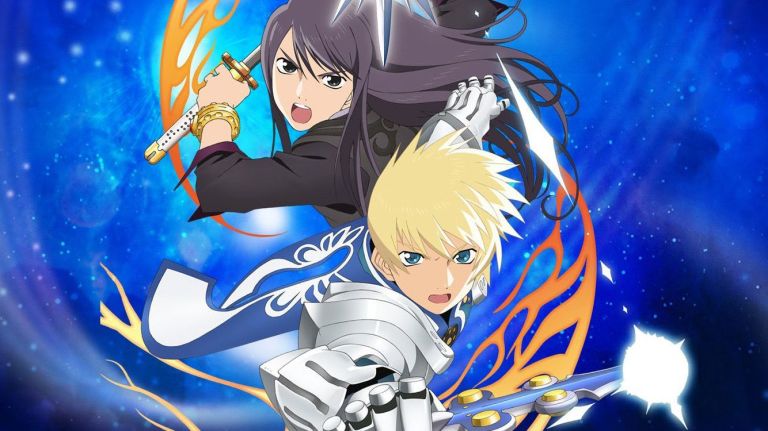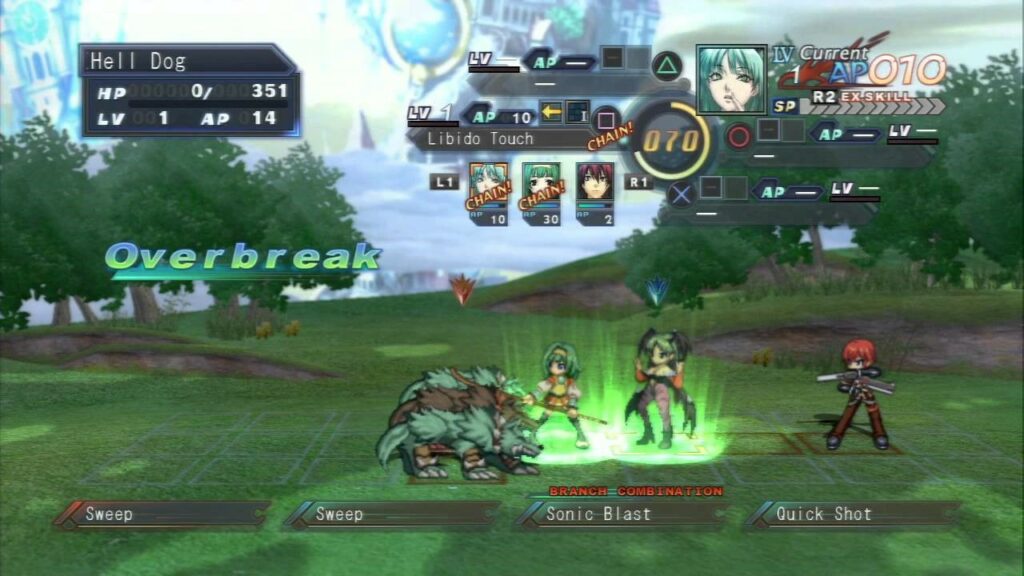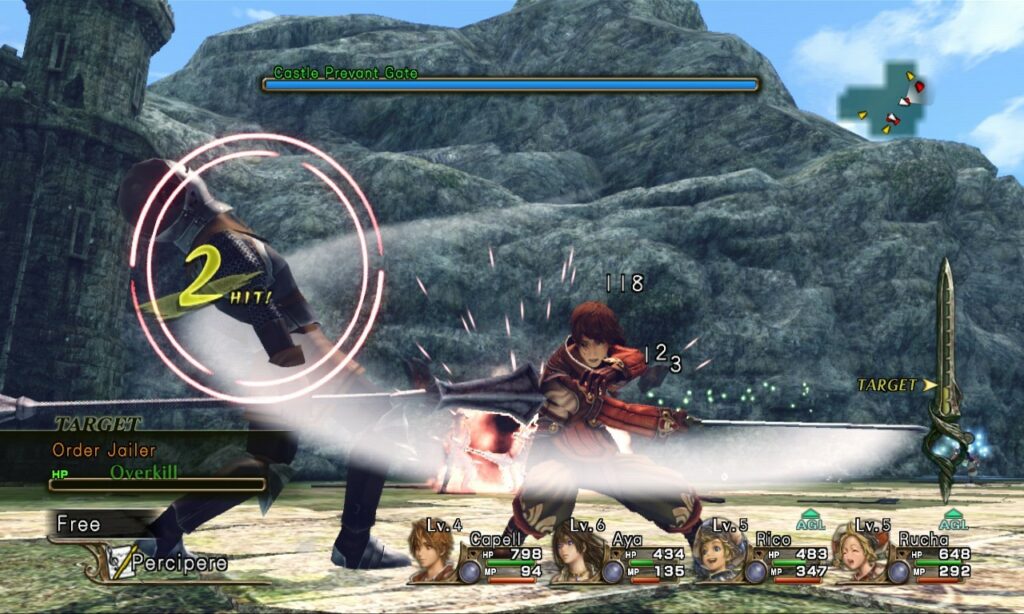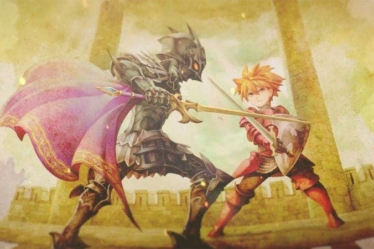
[This article appeared in Italian on Stay Nerd titled “DA TEIRUZU OBU VESUPERIA A TALES OF VESPERIA: DEFINITIVE EDITION – LA PARABOLA DEL PIÙ CONTROVERSO CAPITOLO DELLA SAGA”.]
During the seventh generation of consoles, the one that saw the clash between the third flagship hardware of Sony, Nintendo Wii and Xbox 360, the platform that saw Microsoft for the first time as a real competitor in the gaming world, the Japanese industry began to suffer the effects of a profound creative and financial crisis generated initially by the enormous technological gap that became increasingly clear between Western and Eastern videogames. While Japan had been able to create true masterpieces of style and technology during the generations immediately following the great crisis of gaming PCs, starting from 2005 we European gamers were all witnesses of a worrying halt of the Japanese artistic flow. This trend was all “made in USA”, just when Xbox 360 managed to steal from PlayStation the long-awaited status of the synonym of “video games”. This was mainly thanks to the online multiplayer revolution already started years back with Xbox Live on Xbox OG. If in the early ’90s everyone played “Nintendo” (no matter what model it was or if that piece of video game hardware had the SEGA logo on the plastic shell) and at the end of that decade had passed to the more aggressive “PlayStation”, suddenly the attention of the mainstream audience was focused on a brand-new gaming console, capable with its online multiplayer ecosystem to shape a market that still survives thanks to the crazy revenues that come from online gaming and the invisible market of payable in-game content. We all know today that Microsoft’s efforts in supporting and promoting Xbox 360 did not endure till the last days of its life cycle, but at least in its early stages, the colossus of Redmond made huge investments to overshadow Sony’s popularity. Their hope was to make people forget the legacy of the success of PlayStation 2, still known today not only as the best-selling console of all time, but above all as the only place where players could find some of the most successful titles created at the time.

On the other hand, the first exclusives released on PlayStation 3 were not exactly promising, and for a long time, the Cell architecture of the Japanese hardware remained a real mystery for the vast majority of the developers. The situation was so tense that many multiplatform titles were first developed on Xbox 360 to facilitate the work of third parties and only later brought – often by external devs, less interested in the quality of the final product – to PS3, with some memorable laughable results. Only the titles developed internally – and published at a later date – were able to show with great effectiveness the possibilities of PS3 and the freedom of using proprietary blu-ray discs and their enormous (by that time) capacity. Meanwhile, longtime exclusives were ripped from the catalog of the Japanese consoles and bizarre reboots were created by a platoon of Asian artists in the desperate pursuit of tropes and visual codes of the products made in the USA, as if the only way to succeed to sell something to the “gaijin” audience should be via the watchful eye and the final verdict of a committee of Yankee, reunited to westernize even the most classic of the brands made in Japan. Microsoft’s attempts, however, were not aimed solely at culturally colonizing video games and populating the market with thousands of online first-person shooters, but also trying to capture the interest of a small group of players anchored to the old mechanics of the JRPG genre. Precisely for this reason, several agreements were made with some of the biggest companies of the time to provide Xbox 360 with a sufficiently stocked portfolio of medium and high budget products, co-financed by “daddy” Bill Gates, of course. Final Fantasy took several years to waltz back to home console and the critical response, as we know, was also quite controversial; the next iteration of Dragon Quest and the remakes of the SNES chapters remained well hidden from the mainstream audience on portable consoles, since those were the only ones still popular in the East, eerily anticipating the phenomenon that only years later we would have known as “the mobile gaming boom”, today dominated by gacha-games. Which was the direction to follow?

Just when the JRPG scene had lost its representative icons, Mistwalker productions made their entrance strong of names of great media resonance, such as Hironobu Sakaguchi, the creator of the aforementioned Final Fantasy series, or Nobuo Uematsu, historical composer of Squaresoft already tied to the heritage of the memory of the beloved JRPG saga. Lost Odyssey and Blue Dragon attempted to recreate the atmospheres of Final Fantasy and Dragon Quest (respectively) on Xbox 360 but Microsoft was just ready to greenlight the development of other video games with a strong Japanese flavor in the hope of charming the targeted audience, and consequently the western enthusiasts. In the eyes of gamers back then, the new Microsoft console was shaping as a new ark of salvation for the genre and not surprisingly, a little later, Sony lost even the exclusive of the mothership episodes of the Final Fantasy saga, putting the nationalist Japanese developers in a state of despair.
Not satisfied of having personally produced the development of two AAA titles – which, however, did not particularly appeal to the Japanese market, who even totally ignored the apocryphal sequels – Microsoft Studios decided to go further, contacting various software houses of the land of the Rising Sun to propose exclusive agreements that could attract fans of the Japanese videogame genre par excellence. And so several video games of renowned labels such as Square Enix and Bandai Namco (at the time Namco Bandai) arrived on the shelves of the stores exclusively for the American console while PlayStation 3 saw only the addition in its portfolio of low-budget productions. Small American publishers of the time (like NIS America) made a fortune out of this crisis, very pleased to bring to the West (often with approximate translations and adding game-breaking bugs to the western versions of games) a large number of low-budget and obscure products capable of keeping up the interest of a specific niche of gamers, back then ready to cannibalize even the most dull of the games as long as it had an aesthetic style even remotely tied to Anime. And following this strange trend in 2008 we could choose between Cross Edge on PlayStation 3, a videogame undermined by a static and purely two-dimensional aesthetic borrowed from the popular genre of visual novels, or Infinite Undiscovery (IP owned by Microsoft), an entirely polygonal action RPG published by Square Enix and developed by TRI-ACE, developer of certain fame.
Although in both cases we were talking about products at best forgettable – albeit with some features worthy of mention -, it’s certain known to everyone that war of promotion is mainly based on images and bombastic video advertising, and the less savvy consumers were clearly led to choose to invest their money in video games kissed by higher production values. At least they could have the satisfaction of seeing flexing the muscles of their new generation console. What we consumers could not know, however, is that the aforementioned agreements made by Microsoft with Eastern developers not only included a partial co-financing of those products but most importantly a condition that excluded the release of those same video games on other platforms, especially in the West.
Tales of Vesperia was one of the many victims of that particular historical moment, still remembered today by the protagonists of the time as one of the darkest ever lived by the industry in Japan.
If it is true that the long-awaited tenth chapter of the “Tales of” saga released at the time managed to be remembered as one of the best and most complete JRPG during that generation, but imagine the fury that was created around it when the Japanese news outlets announced the arrival of a revised and corrected version for PS3 of the game, that included two extra characters (and traces of them were already visible in the Xbox360 edition, evidently packaged and distributed in a hurry) and an amount of changes and extra content such as to increase the longevity – already quite generous – of thirty hours of extra play, including new unlockable, secret objectives, DLCs and yet to be seen characters’ interactions. An announcement so unexpected and so close to the release date of the game for Xbox 360 that the Japanese fanbase outraged with blatant demonstrations of pure indignation. There were documented episodes of monthly magazine pages bearing the scandalous news given to the flames or even events of pure collective madness that included the live streaming of people breaking the DVDs of the Xbox 360 version of the game in the anticipation of the new release. These events were also followed by a few eccentric online petitions as well but we must bear in mind that the majority of the Japanese players back then bought the console (at the advertised price of 350$) just to play Tales of.
Arrived on the market only a year later, Tales of Vesperia on PlayStation 3 did not even display any changes to the title that could immediately made clear its expanded nature of Director’s Cut (as happened, years later, to Tales of Graces F in the transition from being an exclusive for Nintendo Wii to PS3 exclusive with new features), as if in fact that was the only true incarnation to be taken into account. Ironically the game package included a booklet bearing a grotesque message of gratitude signed by Bandai Namco and directed to the Xbox 360 players, treated as (paying) beta testers of what it was, to all the effects, an edition judged “incomplete” by the developers themselves. What we Westerners ignored, of course, was that the agreements made with Microsoft made clear that this re-release of the game would never come to us during the seventh generation of consoles, and despite the fans clamoring for the opportunity to buy again the game (unbelievable, but true), they were greeted with passive-aggressive responses on Twitter by the social media managers of Bandai Namco from the official Twitter account of the company.
Several years later a translation patch of fanmade nature was published on the web for this edition of the game (now made unavailable by the same staff to support the official release), which incorporates all the texts of the localized Xbox 360 edition and the translation of the new contents, giving access to all the extra scenarios and mechanics. However, the only way to enjoy this love letter to the series – already supported in the West by a fanbase that had already managed to localize some of chapters that never arrived to the West market, as in the case of Tales of Innocence for Nintendo DS or the re-release on PSone of Tales of Phantasia, remake of the ancestor of the franchise – was to own a modified PS3, a piece of hardware already rare at the time and still practically untraceable if you are not willing to pay crazy amounts of money on eBay for plastic and silicon boxes already condemned to obsolescence due to their architectural defects. It seemed, in short, that the tenth chapter of the Tales of saga, highly appreciated in the West and celebrated in the homeland as one of the best titles available during the middle age of the JRPG genre was now to be considered a Japanese exclusive; a scenario that is not entirely surprising if we think that most of the JRPGs of previous video games ages could barely reach the US market.
After few years, PS3 could finally find new popularity thanks to the publication of numerous first-party exclusives while Microsoft indulged in marketing sequels of its most successful western IP, totally giving up the eastern market after years of failures and the hemorrhage of niche exclusives, like Steins;Gate, popular visual novel developed by .5bp and M.A.G.E.S., now well known in the West thanks to its Anime adaptation and the re-release on PC and Sony platforms.
Because of this reconstructed trust in the Sony brand and in Japanese properties, the “Tales of” series could undergo an operation of “Western renaissance”, supported by the aggressive policies of the producer Hideo Baba (currently working for Square Enix on a new project called Project Prelude Rune). Update: Hideo Baba is not currently working for Square Enix anymore as of April 2019 and his project canceled.
From 2013 to the present western gamers have been able to see, in a relatively short amount of time, the arrival of many localized iterations of the franchise, such as Tales of Xillia, Tales of Xillia 2, Tales of Zestiria, the 3DS version of Tales of the Abyss, the remaster of Tales of Symphonia (sequel included) and Tales of Berseria. The confidence in the potential of the franchise in terms of sales pushed Bandai Namco to localize (in collaboration with Sony) even Tales of Hearts R for PS Vita, a console generally ditched by western players, but absolutely essential for lovers of video games with a strong Japanese taste. The Western renaissance of the series was a huge success in terms of numbers of localized titles, especially if we think that for years the publication of a new game of the Tales of series in the West was perceived by European and American fans as a real event. As a matter of fact in Europe, before the advent of Tales of Vesperia on Xbox 360, it was possible to play through official sources only the terrible port of Tales of Phantasia for Game Boy Advance, the well-known Nintendo Game Cube exclusive, Tales of Symphonia, and finally Tales of Eternia on Sony PSP, porting of the third chapter originally published for PsOne and arrived in the West as a North American exclusive with the name of Tales of Destiny 2. Only 4 games out of 10 were accessible to European gamers, without counting the obscure spin-offs and cross-overs available on the Japanese market.
With all these titles coming one after the other the general reception was surely positive, but veiled by the feeling that perhaps that the franchise was getting stale driven by the desire to achieve an annual publication just like other big names well known in the West, such as the Assassin’s Creed saga or EA sport simulators. In truth the series had always been rather prolific in Japan, alternating different development teams to flesh out diverse gaming solutions adorned by an aesthetic that saw the continuous recycling of famous character designers and art directors, with the soundtrack of Motoi Sakuraba accompanying most of the titles.
The current Bandai Namco policy of in-house development has changed significantly since Tales of Vesperia, although in recent years the “Tales of” brand seemed to be tied to PlayStation thanks to its restored popularity.
The arrival (and success) on Steam of titles like Zestiria, Berseria and Symphonia, as well as the rapid growth of Nintendo Switch in terms of sold units, cannot be ignored. Hideo Baba left the role of producer of the series after the backlash generated by Tales of Zestiria (it was so bad that the animated series inspired by the videogame and produced by Ufotable is now considered more canonical than the game itself) and had been replaced by the younger Yusuke Tomizawa, who already worked on the God Eater series. The future of Tales of seems now tied to a multi-platform release policy always taking into account the Western market finally perceived not only as a den of Yankee shooter lovers. This change of heart is possibly a consequence of the stratospheric success of Bravely Default on Nintendo 3DS in the West, which opened the eyes of Japanese producers.
And that’s how after 10 years of tribulations, whinings of the fanbase on social media and the struggle of the social media managers of Bandai Namco, clearly on the verge of a nervous breakdown, today we can play the final version of what is considered as one of the best 3D chapters of the Tales of saga in its “definitive edition”. We can finally give a warm welcome back to Tales of Vesperia: Definitive Edition on PS4, Xbox One, Nintendo Switch and PC.
This is a JRPG that, although stuffed with the typical padding of the series, perhaps represents the summa maxima of the three-dimensional chapters of the saga before the advent of Xillia and its frenetic combat system based on Link Artes. Tales of Vesperia is a videogame with mechanics that aged throughout these last 10 years but remains a solid experience thanks to its timeless cel-shaded aesthetics in 60fps that can still shine after getting a high resolution bump.
Regretfully this package doesn’t include the animated adaptation produced by the animation studio Production I.G. “Tales of Vesperia: The First Strike” that precedes the video game events shedding light on the relationship between the anti-hero Yuri and his friend/rival Flynn, but I must admit that going back taking the role of that tight-knit group of adventurers and finally appreciating the Japanese dub is definitely a heartwarming experience for those who have waited for so long to do so, and if you are fond of the English dub, you must be warned: trying to save money for the localization (not exactly a novelty for Bandai Namco when it comes to translations), new actors have been hired to take over the roles of the previous ones, even dubbing new lines in between conversations previously recorded by the old voice actors. Needless to say, once again the fanbase has already moved to fix the work of Bandai Namco USA. Tales of Vesperia: Definitive Edition remains a rich feast for JRPG lovers, although inevitably (or exquisitely, according to taste) old school, but the importance of this publication out of Japan is the true goal in historical terms. And who knows what holds the future of the series on home consoles…




